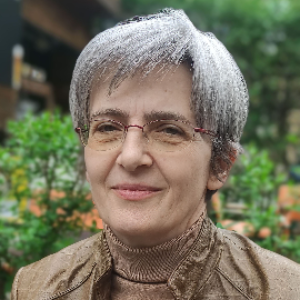Title : Transcriptomic approach reveals salicylic acid-dependent expression of host genes in potato-viroid interaction
Abstract:
Viroids are the smallest known plant pathogens that consist of a single-stranded, circular, non-protein-coding RNA molecule and use the host transcriptional machinery to replicate and spread in plants. Because of their global distribution, viroids are capable of causing severe disease in many crops. The pathogenicity of non-coding viroid RNA is mainly due to the combined action of the RNA silencing machinery and other components of the host plant immune response including phytohormone signaling pathways. In this study, the importance of salicylic acid (SA) in the basal defense of potato (Solanum tuberosum L.) against the viroid PSTVd, the causal agent of potato spindle tuber viroid disease, was investigated using wilt-type plants (wt) and transgenic NahG potato plants that cannot accumulate SA. The dynamics of viroid RNA amplification in systemically infected leaves were monitored 1-8 weeks after inoculation (wpi) using one-step real-time PCR. Transgenic SA-deficient plants exhibited increased susceptibility to PSTVd compared with wt plants, as evidenced by increased accumulation of viroid RNA and early symptom expression. Transcriptomic analysis identified 958 differentially expressed genes (DEGs) in NahG plants and 753 DEGs in wt plants induced 5 wpi. Gene ontology analysis revealed significant changes in the expression of genes involved in stress response, pathogen response, regulation of ion exchange, photosynthesis, and protein folding, indicating activation of basal immune response in wt plants after PSTVd infection. Conversely, the expression of genes involved in immune response, peroxidase activity, phytohormone signaling, and transcription factor activity was down-regulated in SA-deficient plants. In addition, the endogenous levels of SA, IAA, JA, ABA and BR were analyzed using UHPLC-MS/MS. To confirm that the dynamics of PSTVd disease progression in NahG lines was indeed due to their inability to accumulate SA, exogenous treatment with 2,6-dichloroisonicotinic acid (INA), a functional analog of SA, was performed. The protective effect of INA treatment was determined from the delayed accumulation of viroids and the appearance of symptoms in both NahG and wt plants, which was further verified by gene expression analysis. The results indicate that SA is an important component of the basal defense response of potato against PSTVd.



